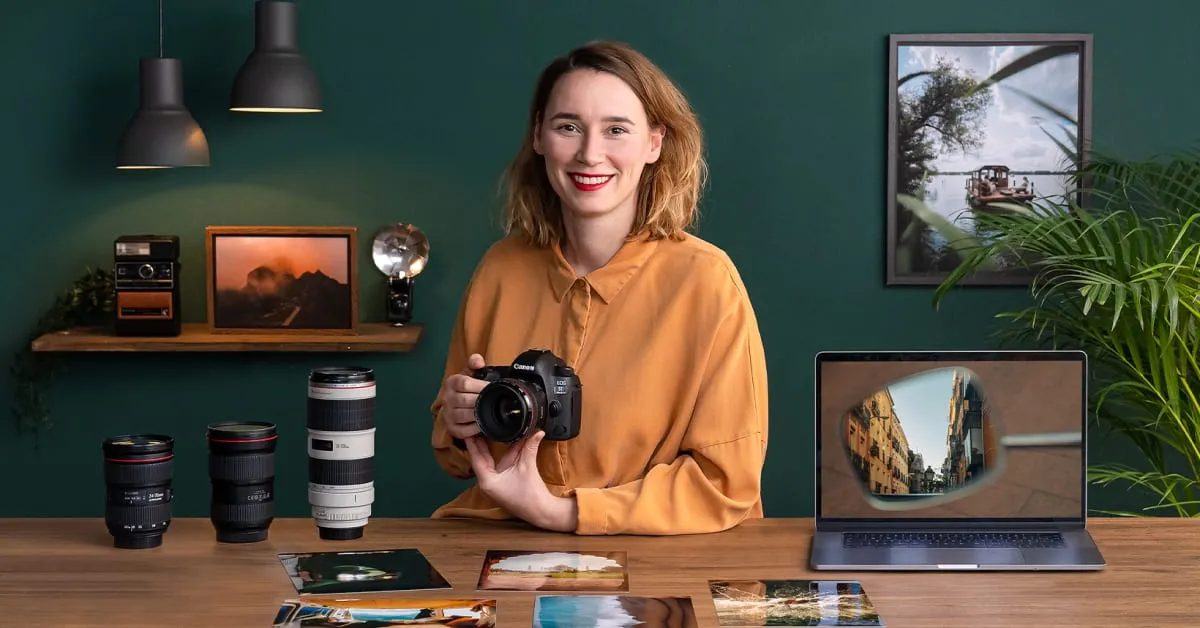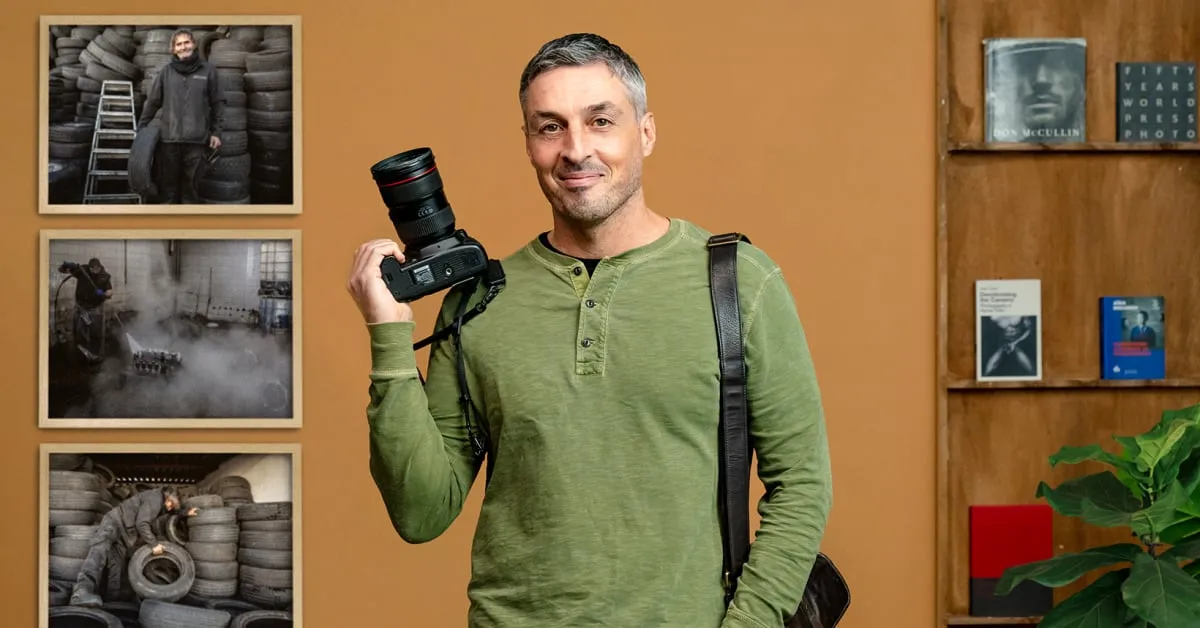
Master Photography Composition 
With 30 years of experience, a professional photographer will teach you the essential second ingredient to great photography: composition. Unlock the secrets of photography composition today. ▼
ADVERTISEMENT
Course Feature
![]() Cost:
Cost:
Free
![]() Provider:
Provider:
Udemy
![]() Certificate:
Certificate:
Paid Certification
![]() Language:
Language:
English
Course Overview
❗The content presented here is sourced directly from Udemy platform. For comprehensive course details, including enrollment information, simply click on the 'Go to class' link on our website.
Updated in [April 29th, 2023]
Welcome to Master Photography Composition! This course is designed to help you take amazing photos by improving your composition skills.
Course Overview: In this course, you will learn about the fundamentals of composition, including the “rule of thirds” and the eight “Ingredients” of composition. You will also learn about the various elements that aid in composition, such as aspect ratios.
Possible Development Directions: After completing this course, you will be able to apply the principles of composition to your own photography. You will be able to create stunning compositions that will make your photos stand out.
Related Learning Suggestions: To further develop your composition skills, you can explore different types of photography, such as landscape, portrait, and macro photography. You can also experiment with different types of lenses and camera settings to create unique compositions. Additionally, you can look into post-processing techniques to enhance your photos.
[Applications]
After completing this course, students can apply their newfound knowledge of photography composition to take stunning photos. They can use the "rule of thirds" to create balanced compositions, and understand the importance of aspect ratios. Additionally, they can use the eight "Ingredients" of Composition to create dynamic and interesting photos. With this knowledge, students can create beautiful and captivating photos that will stand out from the crowd.
[Career Paths]
1. Professional Photographer: Professional photographers use their technical and creative skills to capture images for a variety of purposes, such as advertising, editorial, and commercial work. They must be able to use a variety of equipment, including digital cameras, lenses, and lighting. As digital technology continues to evolve, professional photographers must stay up-to-date on the latest trends and techniques.
2. Photojournalist: Photojournalists use their skills to capture newsworthy images for newspapers, magazines, and other media outlets. They must be able to capture images quickly and accurately, often in difficult or dangerous situations. As digital technology continues to evolve, photojournalists must stay up-to-date on the latest trends and techniques.
3. Photo Editor: Photo editors are responsible for selecting and editing images for publication. They must have a keen eye for detail and be able to identify the best images for a particular project. As digital technology continues to evolve, photo editors must stay up-to-date on the latest trends and techniques.
4. Digital Imaging Technician: Digital imaging technicians are responsible for manipulating and enhancing digital images. They must be knowledgeable in a variety of software programs, such as Photoshop, and be able to use a variety of tools to adjust color, contrast, and other aspects of an image. As digital technology continues to evolve, digital imaging technicians must stay up-to-date on the latest trends and techniques.
[Education Paths]
1. Bachelor of Arts in Photography: This degree program provides students with a comprehensive understanding of the art and science of photography. Students learn about the history of photography, the fundamentals of composition, lighting, and digital photography. They also learn about the business side of photography, such as marketing and pricing. This degree is ideal for those who want to pursue a career in professional photography.
2. Master of Fine Arts in Photography: This degree program is designed for those who want to take their photography skills to the next level. Students learn advanced techniques in composition, lighting, and digital photography. They also learn about the history of photography and the business side of the industry. This degree is ideal for those who want to pursue a career in professional photography or teach photography at the college level.
3. Doctor of Philosophy in Photography: This degree program is designed for those who want to become experts in the field of photography. Students learn advanced techniques in composition, lighting, and digital photography. They also learn about the history of photography and the business side of the industry. This degree is ideal for those who want to pursue a career in research or teach photography at the college level.
4. Certificate in Digital Photography: This certificate program is designed for those who want to learn the basics of digital photography. Students learn about the fundamentals of composition, lighting, and digital photography. They also learn about the business side of photography, such as marketing and pricing. This certificate is ideal for those who want to pursue a career in professional photography or teach photography at the college level.
Course Syllabus
What is Composition in Photography?
the "Ingredients" of Composition
Viewfinder Limitations
Aspect Ratio Essentials for Your Photos
Pros & Cons

Amazing lessons, well composed and educational, teacher's style, helpful, clear explanations, well thought out, simple yet easy to understand, foarte clar explicat.

Basic explanation, not useful for some, camera settings and lenses not shown, prea multe detalii sau termeni sofisticati.
Course Provider

Provider Udemy's Stats at AZClass
Discussion and Reviews
0.0 (Based on 0 reviews)
Explore Similar Online Courses

Arctic Security Fundamentals

The Captivating Actor - A Complete & Comprehensive Guide

Python for Informatics: Exploring Information

Social Network Analysis

Introduction to Systematic Review and Meta-Analysis

The Analytics Edge

DCO042 - Python For Informatics

Causal Diagrams: Draw Your Assumptions Before Your Conclusions

Whole genome sequencing of bacterial genomes - tools and applications

Lifestyle and Travel Photography

Beginner Canon Digital SLR (DSLR) Photography

Introduction to Photojournalism: Capture Powerful Stories
 Related Categories
Related Categories
 Popular Providers
Popular Providers
Quiz
 Submitted Sucessfully
Submitted Sucessfully
1. What is the 'rule of thirds'?
2. What are the eight 'Ingredients' of Composition?
3. What is Aspect Ratios?


Start your review of Master Photography Composition